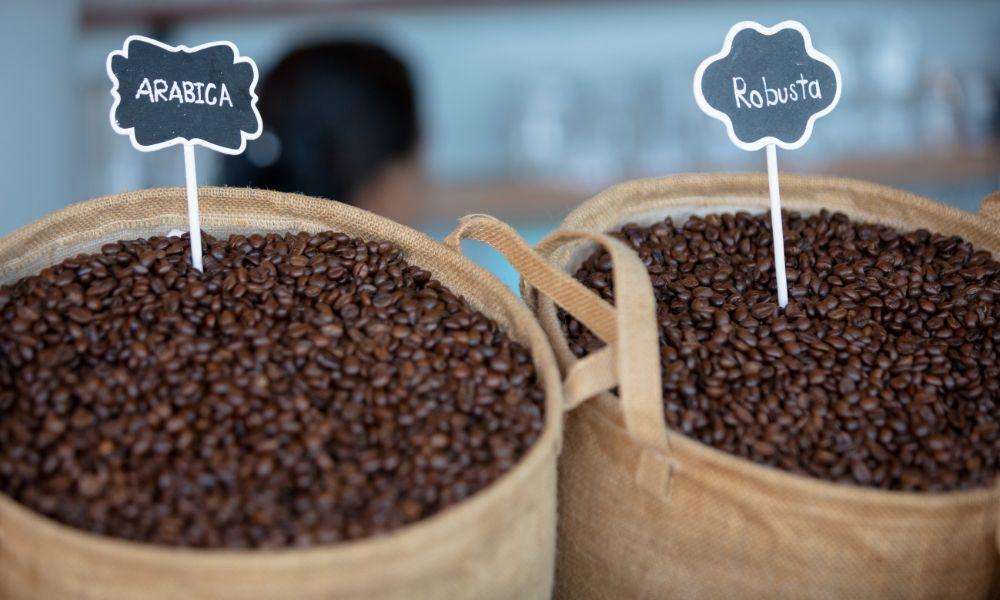Arabica coffee — a term that sings sweet, aromatic chords to every coffee enthusiast’s ears — is globally admired for its sweetness, complexity, and alluring aroma. Originating from the highlands of Ethiopia and Sudan, Arabica contributes nearly 60% of the world’s coffee production. Each variety or cultivar of this magnificent species carries its unique flavor identity, providing a delightful treat for coffee aficionados.

What Makes Arabica Coffee Special?
Cherished worldwide — from the espresso lovers of Italy to the café regulars of France to home brewing enthusiasts globally — Arabica is often regarded as the “wine of coffee.” It is the assorted varieties, complex characteristics, and rich flavors that have transformed the act of sipping coffee into a cherished ritual for many.
A Tour of Arabica Coffee Varieties
The world of Arabica coffee is vast and complex, with numerous variants waiting to be explored. Let’s embark on a flavorful journey to uncover the characteristics of some prominent Arabica coffee varieties.
| Arabica Variety | Origin | Flavor Notes | Key Characteristics |
|---|---|---|---|
| Typica | Original Arabica Variety | Floral, Fruit, Sugar, Caramel, Chocolate | High-quality beans, low-yield. |
| Bourbon | Mutation of Typica | Fruit, Citrus | Sweet and complex flavors, brighter acidity, high-yield. |
| Caturra | Mutation of Bourbon | Bright, Vibrant | High acidity, medium-bodied, generous harvest despite shorter stature. |
| Mundo Novo | Cross of Bourbon and Typica | Earthy, Fruity | Full-bodied flavor, low acidity, disease-resistant, adaptable to various climates. |
| Catimor | Blend of Caturra and Timor | Fruity with Aromatic Undertones | Full-bodied flavor, low acidity, sturdy build, good disease and pest resistance. |
Typica: The Original
Typica, the original Arabica coffee variety, is the base upon which numerous cultivars are built. Despite its low yield, Typica rises to fame for the high-quality beans it produces. These beans result in a delicious, superior cup of coffee noted for its floral, fruit, and sugar flavors, ultimately leaving hints of caramel and chocolate on your palate.
Bourbon: Sweet and Tangy
Bourbon is a delightful mutation of Typica, cherished for its mesmerizing sweetness and sharp acidity. Known to produce more than Typica, Bourbon’s beans may be slightly smaller, but they are valued highly for their quality and yield. Bourbon coffee is bright and complex, with dominant flavors of fruit and citrus, making every sip a delight.
Caturra: Vibrant and Medium-bodied
Caturra, a natural mutation of Bourbon discovered in the 1930s, carries unique character with its vibrant acidity and medium-bodied flavor. Caturra is recognized for its superior brightness and high acidity level. Despite its shorter stature compared to other varieties, it delivers a generous harvest, a factor that endears it to growers.
Mundo Novo: Rich and Full-bodied
Mundo Novo, a combination of Bourbon and Typica, offers a rich, full-bodied flavor with low acidity. This variety is distinguished by its earthy and fruity notes and is particularly preferred by coffee growers for its disease resistance, adaptability to various climates, and towering trees.
Catimor: Fruity and Aromatic
Catimor, a blend of Caturra and Timor, delivers a cup filled with full-bodied, low acidic coffee. The blend, originating from the 1950s, delights the palate with unexpected fruity flavors and aromatic undertones dancing on your tongue. Farmers are particularly fond of Catimor because of its sturdy build and commendable resistance to diseases and pests.
“Coffee is a language in itself.”
– Jackie Chan
The Journey of Arabica Coffee Production

Crafting the perfect coffee bean is a labor of love filled with complex procedures and passionate efforts. Whether it’s choosing the appropriate processing method or ensuring the best-growing conditions, coffee production is as much science as it is an art.
Arabica coffee trees generally require a tropical climate — around 20°C, fertile soil, and abundant rainfall. Regions with higher altitudes, specifically between 800m-2000m, are better suited since the cool temperatures allow the coffee cherries more time to develop, thereby enriching the flavors.
Decoding the Factors Affecting Arabica Flavours
Ever wondered about the many flavors that a single sip of Arabica coffee presents? These questions lead us to recognize that each Arabica coffee variant is a melody, each with its unique grace notes, each offering a unique experience to be savored.
Composing Tasting Notes: Unpacking Flavors and Aromas

Brewing the perfect cup of Arabica Coffee may seem daunting, but with a little patience, some experimentation, and the following tips, you can brew a cup that rivals any café.
- Grinding techniques: Coarsely ground coffee is excellent for French press and cold brew methods, while a finer grind is apt for espresso.
- Coffee to Water Ratio: A good starting point is using 2 tablespoons of coffee for every 6 ounces of water.
- Water temperature: The ideal water temperature for extraction is between 195 to 205 degrees Fahrenheit.
- Freshness Matters: Always use freshly ground coffee, and
- Set the Timer: Different brewing methods require different brewing times.
As you sample the delightful variants of Arabica coffee, consider pairing with food that complements the unique coffee flavors. A well-paired meal enhances the coffee drinking experience, taking enjoyment to new heights.
FAQs
1. What are the different types of Arabica coffee?
There are numerous types of Arabica coffee, including Typica, Bourbon, Caturra, Mundo Novo, and Catimor, each having unique flavor profiles and characteristics.
2. How do Arabica coffee flavors vary based on origin?
The region where Arabica coffee is grown significantly impacts its flavors. Factors such as altitude, soil, rainfall, and processing methods can lead to varying flavor profiles.
3. What brewing methods work best for Arabica coffee?
Brewing methods can significantly change the taste of Arabica coffee. French press, pour-over, and espresso machines are popular methods. Each method extracts different flavors and aromas, resulting in different coffee experiences.
4. How should I choose Arabica coffee that suits my taste preferences?
Pay attention to the flavor profiles described on coffee packs. If you enjoy bright, fruity flavors, bourbons might be an excellent choice for you. If you prefer a fuller body with low acidity, Mundo Novo might be your cup of coffee.
5. What is the acidity level of Arabica coffee?
The acidity of Arabica coffee can vary significantly depending on the type. For example, Caturra has higher acidity levels while Catimor and Mundo Novo have lower acidity.
6. How is Arabica coffee processed after harvesting?
Post-harvest processing of Arabica coffee involves several steps including drying (natural process) or washing (washed process), hulling, grading and sorting, and finally roasting.
7. Are there organic Arabica coffee options available?
Yes, there are many providers who grow Arabica coffee beans under organic conditions without using synthetic fertilizers or chemicals. These are often labelled as “organic” and certified by a reliable organic certification association.
8. What is the history behind Arabica coffee?
Arabica coffee originated in the highlands of Ethiopia and Sudan and is considered one of the first cultivated coffee species. This species has grown in popularity due to its superior quality and flavor profiles. Today, Arabica coffee accounts for the majority of the world’s coffee production.
In Conclusion
Arabica coffee, with its fragrant, complex characters and wholesome flavors, has captivated hearts worldwide. Each variety of Arabica Coffee stands as an evidence of nature’s marvel and human ingenuity working in perfect harmony. So, whether you’re starting your day or winding down, a finely brewed Arabica coffee will always set the right tone, every single day.
For every sip taken, let’s admire the extensive process, the labor of love that crafts this beloved beverage. In every drop of Arabica coffee, the world comes alive. Here’s to our burgeoning love for coffee, bottoms up!
References
- National Coffee Association – Arabica Coffee. Accessed on April 23, 2022. Click Here
- Specialty Coffee Association – Coffee Taster’s Flavor Wheel. Accessed on April 23, 2022. Click Here






